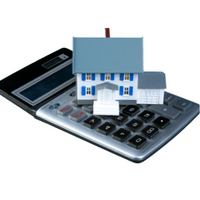How To … Calculate LTV, CLTV, and TLTV!
When you think about it, the logic is pretty simple! The more “skin in the game,” the less likely that a borrower will default on their loan. In this case, “skin” refers to equity. And this makes perfect sense. The more equity that a borrower has in his or her property, the less likely is the chance that he or she would be willing to lose that equity through foreclosure. As such, the higher the borrower’s equity stake, the more likely he or she would do whatever is necessary to avoid defaulting on his or her mortgage. This all correlates to less risk for the lender.
Lenders love when applicants enter into a mortgage transaction having a sizable down payment. A sizable down payment constitutes an example of a “compensating factor” that can help to offset other less-desirable credentials such as a lower-than-ideal credit score or higher-than-ideal debt-to-income ratios. This is why most, if not all, mortgage products have maximum loan-to-value (LTV) allowances establishing the minimum amount of equity that the lender requires the borrower to have.

Loan-to-value, referred to as “LTV,” represents the lender’s ownership interest in the subject property expressed in the form of a percentage. Let’s say that an individual desires to purchase a home, the purchase price and appraised value of which is $100,000. She intends to finance this home with a loan amount of $90,000. At the time when she is issued this loan, the lender will have a $90,000 equity stake (or ownership interest) in her property. Since $90,000 is ninety percent (90%) of the property’s purchase price and appraised value, her LTV, therefore, is 90%.
The borrower’s personal ownership stake in her property is referred to as equity. In this example, our borrower has a $10,000 equity position in her property which constitutes 10%.
The following is extremely important to understand so please do not continue reading beyond this point unless and until it makes sense. When there is one lien on a property, LTV plus equity will always equate to 100%. And, through an amortizing mortgage, with every payment remitted, the LTV reduces while the equity increases. Regardless, however, and all throughout the entire loan, the LTV plus the equity will always equate to 100%.
So how do we calculate LTV? I’m happy that you asked! To calculate LTV on a purchase transaction, you simply divide the loan amount by the lesser of the subject property’s appraised value or its purchase price. Just because a home sells for $100,000 doesn’t mean that it’s going to appraise for $100,000. Although it certainly could, it could also appraise higher or even lower than its purchase price. Therefore, to prevent the borrower from potentially taking advantage of artificially-inflated equity, on a purchase transaction, LTV is calculated by dividing the loan amount by the lesser of the subject property’s appraised value or its purchase price.
Through a seasoned refinance, LTV is simply calculated by dividing the loan amount by the subject property’s appraised value. A non-seasoned refinance occurs when, for whatever reason, a borrower opts to refinance a mortgage loan securing a property that he or she acquired less than 12 months prior. Through a non-seasoned refinance, and to once again prevent the borrower from potentially taking advantage of artificially-inflated equity, LTV is calculated by dividing the loan amount by the lesser of the subject property’s current appraised value, original appraised value, or original purchase price.
Combined Loan-to-Value (CLTV)
Combined loan-to-value (CLTV) represents all outstanding property-related debt in relation to the subject property’s appraised value. To illustrate this, let’s consider the following scenario.
A borrower owns a home that’s worth $400,000. Secured against this home’s title is a first mortgage with an outstanding balance of $100,000 and a home equity line of credit (HELOC). The HELOC’s total available credit amount (also referred to as its line amount) is for $200,000. At this moment, however, the borrower only owes $100,000 of that. Since CLTV considers all currently-outstanding property-related debt, to calculate this scenario’s CLTV we would add the $100,000 first mortgage balance to the $100,000 outstanding HELOC balance to derive the total outstanding property-related debt of $200,000. When we then divide the total outstanding property-related debt amount of $200,000 by the $400,000 property value, we rightfully conclude that the CLTV is 50%.
CLTV should be considered a momentary snapshot in time. That’s because the moment when the borrower pays anything towards the outstanding HELOC balance or borrows any amount against the available credit line, even a penny, the CLTV will fluctuate.
Total Loan-to-Value (TLTV)
The total loan to value (TLTV) which, by the way, is synonymous with HLTV (high loan-to-value) which, by the way, is synonymous with HCLTV (high credit loan-to-value) – three names for the same thing, represents all outstanding property-related encumbrances in relation to the property’s value. Let’s return to the previous example.
In this scenario, the borrower has a first mortgage with an outstanding balance of $100,000. She also has a HELOC with a $100,000 balance currently outstanding and a total available credit line amounting to $200,000. Even though the borrower may only currently owe $100,000 on the line of credit, there is nothing stopping her, at any time, from accessing the remaining credit and owing the full $200,000. Therefore, the total available credit line is the amount of the lien that’s placed against the property’s title and the lien is considered to be an encumbrance. As such, in this scenario, the borrower has a $100,000 first-lien encumbrance along with a $200,000 second-lien encumbrance for total lien encumbrances amounting to $300,000. This is why, when we divide the $300,000 lien encumbrance total by the property’s $400,000 value, we rightfully conclude that the property’s TLTV is 75%.
Be sure to catch next week’s article through which I review how to effectively explain the difference between the note rate and the annual percentage rate (APR) to your customer.

